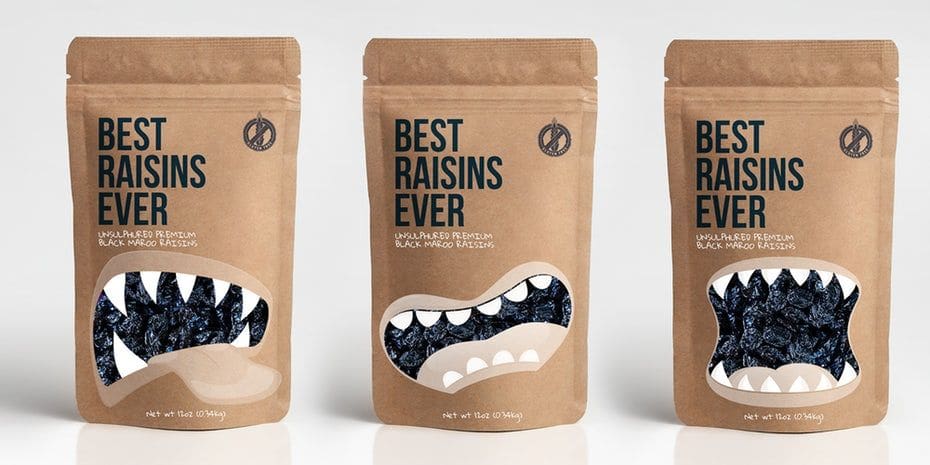Since your website is the very first point of contact that your potential customers have with your company, it is essential that you present the most favorable ‘image’ possible. By this, we mean giving it a design that is not only appealing to the sight but also easy to use.
It’s possible that your website’s terrible design is the reason why you’ve been having so much trouble getting positive results from it.
People have a tendency to leave a website quickly if it gives off the impression that it is disorganized and chaotic, or if it is difficult to browse. They would end up going to a different website, which is almost probably going to be one of your competitors. This is the absolute worst thing that could happen to your business, so try to avoid it at all costs.
In point of fact, the design of your website is a very important component of your whole digital marketing strategy. It’s essentially what keeps both your potential and present customers interested in your brand and wanting to find out more information about it. On the other hand, this is merely one of the many compelling arguments in favor of including it in the strategy you develop.
In this piece, you’ll learn how the design of your website may have a significant impact on your marketing objectives and how it can ultimately contribute to the success of your company in this era of digital technology.
Following this article, you will be presented with five astounding advantages of owning a website that has been thoughtfully developed. After reading this article, you may feel compelled to immediately begin revamping your own website.
You might also want to stay around if you’re interested in learning many strategies for developing a web design that can provide you with all of the benefits that we’ll be discussing in the following sentences.
Let’s get started keeping these points in mind, shall we?
Improves SEO
Even if having a website with a strong web design is one of the most important factors in a website’s success, search engine optimization (SEO) is still the fundamental basis of any site that is successful.
There are still some digital marketers who aren’t aware that search engine optimization and website design can actually complement each other. They are under the impression that the components of website design have no bearing on the positions achieved in search engines.
The truth is that the design of a website does have an effect on search engine optimization.
Your ranking can benefit from well-designed content, while it can suffer from poorly designed content. Websites that provide visitors with a pleasant experience, especially Google, are quite popular with search engines (UX). They evaluate each website’s web design by having their bots navigate to other websites.
Keep in mind that bots are attempting to imitate the experience of using a human computer.
What is undesirable to human users is equally unappealing to the automated software that search engines use. If the content on your website is out of date, the writing is difficult to understand, or it takes a long time to load, you will make it more difficult for your audience to become engaged. They won’t stay, but will instead leave. In a situation such as this, bots will also have the same reaction, and as a result, your rating will suffer.
Builds trust in your product and positions you as an industry leader
If your website has a good web design, your authority will be higher, and when your authority is higher, your website’s visitors will trust you more. It delivers a one-two punch that enables individuals to get over their innate mistrust of brands and more readily create a link with your firm. In other words, it helps people get over their inherent mistrust of brands.
When people visit your website and are impressed by the way it appears and performs, they will view you as a reputable brand that they can depend on. They will become more invested to investigate the stuff you provide, learning more about you and what you have to offer in the process.
On the other side, if visitors to your website are left with an unfavorable impression, they won’t trust your company’s products or services, which will effectively end any chance you had of converting them into paying clients. A website that was created in a sloppy manner is almost always a warning sign for virtually everybody who happens upon it.
It is important to keep in mind that as soon as visitors land on your website, they will form an opinion regarding your image and brand. The design of your website need to be able to convey something about the nature of your business. If you don’t, you’ll give your visitors the wrong impression, which will make it more difficult for them to trust what you have to offer.
Increases the number of conversions
A more responsive site design results in an increase in the number of conversions. Sites that offer a navigation structure that is both simple and straightforward encourage users to continue exploring the site, which ultimately leads to increased conversion rates in terms of subscriptions and purchases.
Users are less likely to continue exploring pages that give a navigation experience that is irritating since it discourages them from continuing their exploration. People lose interest in the firm, which results in the company missing out on the chance to turn those people into customers.
The key is to reduce the number of items on your top navigation menu as much as possible. For example, if you have six separate dropdowns in the top header, each with eight different options, your visitors will have a difficult time deciding which one of those dropdowns to choose.
Reduce the number of alternatives in your navigation bar to just a handful, and make sure that at least one of those options links consumers to a “click to call” page or another page where they may submit their contact information.
Produces an impact that is hard to forget
First impressions are extremely important to the success of a company. Because it plays a role in creating the initial impression that your customers have of your business, your website is not something you should treat flippantly at all. To win over the people that make up your target audience, you need to put your best foot forward.
It only takes users 0.05 seconds to decide whether or not to continue using a website, which is incredible if you think about it. It is possible that it does not seem as startling as it once did given that the attention span of people has shrunk as a direct result of the digital age in which we currently live.
If the design of your website does not impress your site’s visitors, they are likely to view your company as one that does not place a high value on the patronage of its clients. This will be a steadfast presumption for them, particularly if they were unhappy with the overall quality of the user experience.
They will exit the page and go to a different website instead, which is most likely the website of your rival business.
Makes it easier for you to stand out from the crowd.
Even while making a positive first impression is a great way to get started, it is still incredibly necessary to keep on improving the design of your website in order to stay one step ahead of the competition.
Who knows, but it’s possible that your rivals are already one or two levels ahead of you at this point.
You should go into this with the mentality that everyone else in your business might also be working on constructing websites that are able to immediately capture the attention of their visitors. Because of this, you should make sure that yours is kept up to date on a regular basis.
Your website needs to implement the most recent developments in web design if you want it to truly stand out (and let’s face it, who doesn’t want that?). It should have a layout that is optimized for mobile devices, provide a dynamic user experience (UX), and attract them with an original theme.
In addition, having a powerful brand identity as well as making consistent use of colors, fonts, and creative layout will quickly differentiate you from everyone else, and we mean this in a completely positive way. In the end, consumers are drawn to unique brand names.
Important Advice That Will Help You Improve Your Website Design
As promised, I will now provide you with a list of five easy things you can do to take the design of your existing website to the next level:
Have a straightforward and organized navigation system.
People and search engine bots are more likely to stay on a website that is straightforward and easy to use than they are to stay on a page that is disorganized and difficult to navigate.
If you make it difficult for your visitors to find the information that they require, they will most likely leave your website. The same principle applies to crawlers; your site’s ranking will suffer according to the number of URLs and obstacles it requires them to navigate.
Keep your website’s URLs succinct and simple to make them easier to remember. If at all possible, remove any duplicates and restrict the number of categories contained inside your URLs.
Remove all sources of distraction and friction
Stock photos and animations that are too intricate are two examples of website features that have a tendency to distract from the value and message that a company is trying to communicate.
If you are aware that you have included any of these elements on your website, you should take the necessary steps to remove them so that visitors can have a better understanding of what your company is all about.
Maintain the same pattern
A successful website design relies heavily on consistency.
If you choose to display a variety of design styles rather than keeping to just one, your site visitors will be left bewildered and wondering where else to go except the “back” button on their browser.
Be sure that the text on your site and the fonts that you use for your buttons, as well as the headers, subheadings, and text sizes that you use throughout the entirety of your site, are all consistent with one another.
Get your page loaded more quickly
Let’s face it. These days, people lack the patience to wait for a website to load because they expect instant gratification.
It’s a well-known fact that a delay in load time of just 100 milliseconds can result in a 7% drop in conversions. Because your website took too long to load, you probably wouldn’t want to risk losing the chance to convert potential customers, would you?
Not only that, but in addition to that, Google will punish you by lowering your ranking after discovering that consumers do not like your website as much as they should because of its performance.
Use responsive design.
You probably remember us mentioning responsive design earlier on, and here is a little explanation regarding it that we have provided for you.
Because we now live in a world in which everyone browses the internet using a variety of mobile devices, it is very necessary to adopt responsive design in order to meet and exceed the standards set by users.
Google made the announcement not too long ago that it has shifted its focus to mobile devices, rewarding websites that function effectively across all screen sizes and provide a positive experience for mobile consumers.
The Conclusion
If you want to generate leads and convert them, having a strong web design is the way to go. It doesn’t matter if your aim is to attract more quality traffic to your site or generate leads. However, if you do not have your own team of specialists working for you, the task will be extremely challenging.
The good thing is that if you need help getting the task done, you can always trust a digital marketing agency that specializes in Singapore web design to get it done for you. Believe us when we say that it will be well worth the investment!





